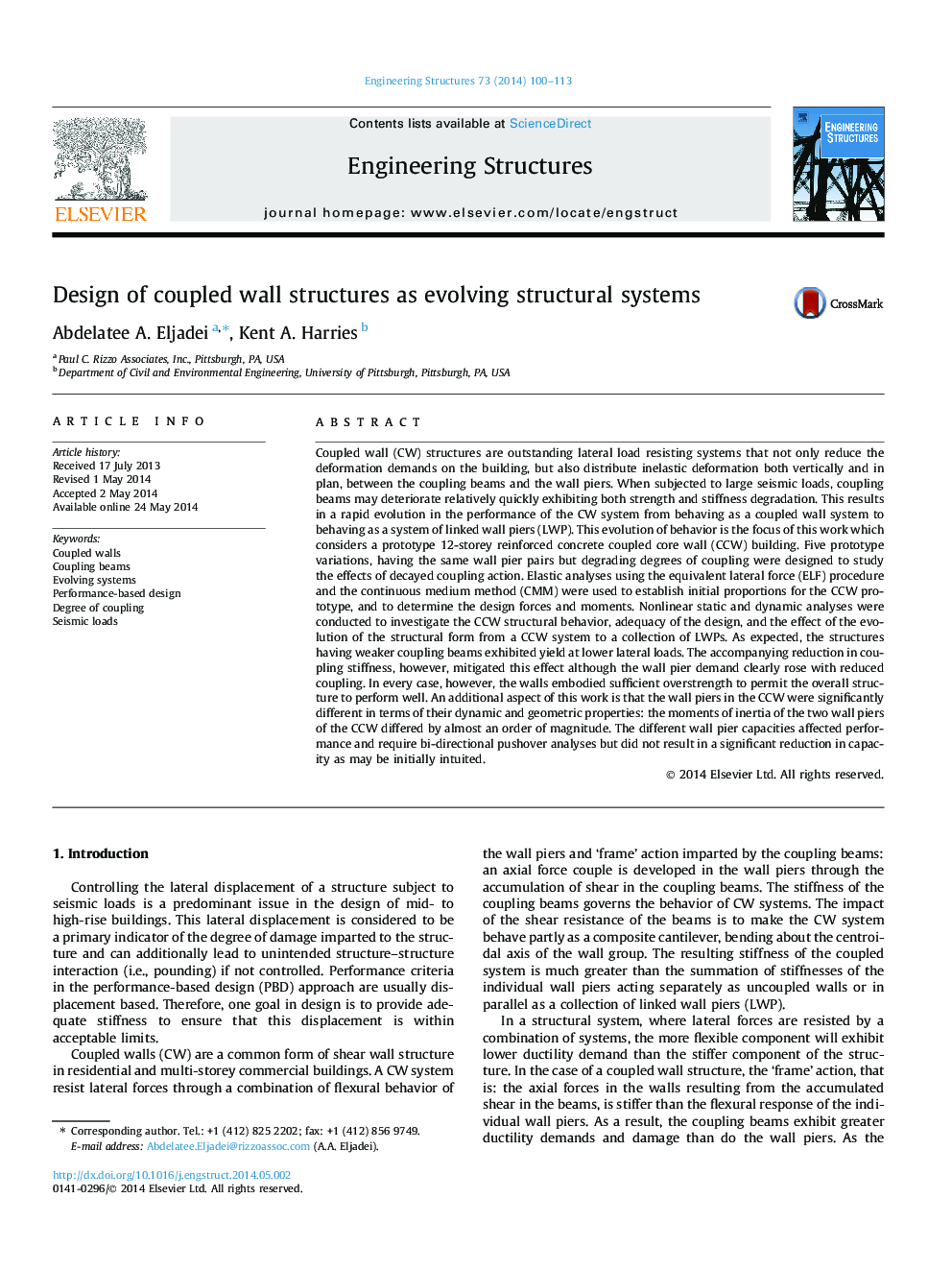| کد مقاله | کد نشریه | سال انتشار | مقاله انگلیسی | نسخه تمام متن |
|---|---|---|---|---|
| 266688 | 504372 | 2014 | 14 صفحه PDF | دانلود رایگان |
• Coupled walls provide superior lateral stiffness when remain elastic.
• Coupled walls behave as stiff coupled system for wind and moderate seismic loads.
• Coupling beams degrade prior to the plastic capacity of the system being achieved.
• Coupled walls evolve into a collection of linked wall piers at high seismic loads.
• Reducing coupling beam capacity could be a key in developing constructible design.
Coupled wall (CW) structures are outstanding lateral load resisting systems that not only reduce the deformation demands on the building, but also distribute inelastic deformation both vertically and in plan, between the coupling beams and the wall piers. When subjected to large seismic loads, coupling beams may deteriorate relatively quickly exhibiting both strength and stiffness degradation. This results in a rapid evolution in the performance of the CW system from behaving as a coupled wall system to behaving as a system of linked wall piers (LWP). This evolution of behavior is the focus of this work which considers a prototype 12-storey reinforced concrete coupled core wall (CCW) building. Five prototype variations, having the same wall pier pairs but degrading degrees of coupling were designed to study the effects of decayed coupling action. Elastic analyses using the equivalent lateral force (ELF) procedure and the continuous medium method (CMM) were used to establish initial proportions for the CCW prototype, and to determine the design forces and moments. Nonlinear static and dynamic analyses were conducted to investigate the CCW structural behavior, adequacy of the design, and the effect of the evolution of the structural form from a CCW system to a collection of LWPs. As expected, the structures having weaker coupling beams exhibited yield at lower lateral loads. The accompanying reduction in coupling stiffness, however, mitigated this effect although the wall pier demand clearly rose with reduced coupling. In every case, however, the walls embodied sufficient overstrength to permit the overall structure to perform well. An additional aspect of this work is that the wall piers in the CCW were significantly different in terms of their dynamic and geometric properties: the moments of inertia of the two wall piers of the CCW differed by almost an order of magnitude. The different wall pier capacities affected performance and require bi-directional pushover analyses but did not result in a significant reduction in capacity as may be initially intuited.
Journal: Engineering Structures - Volume 73, 15 August 2014, Pages 100–113
